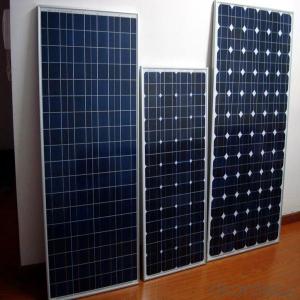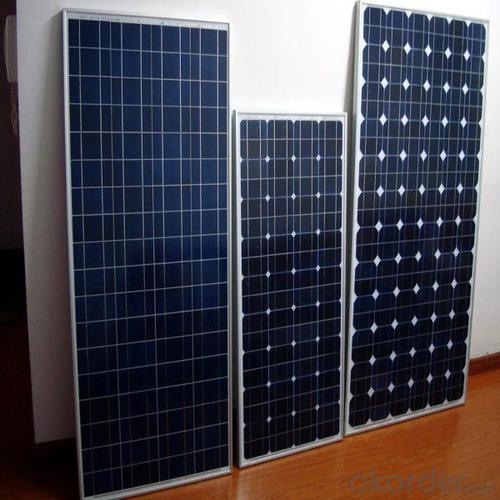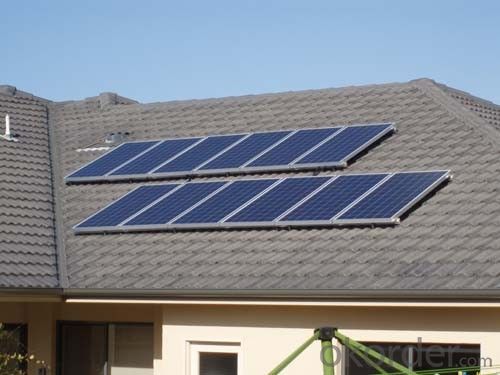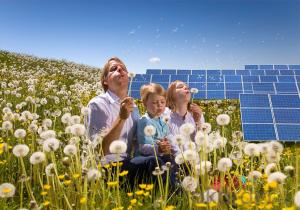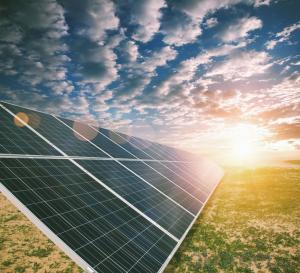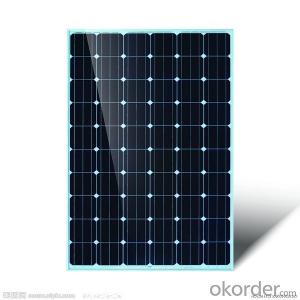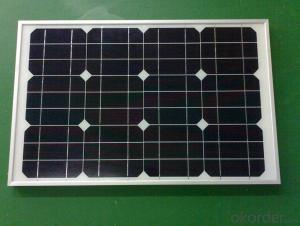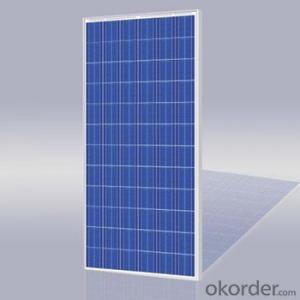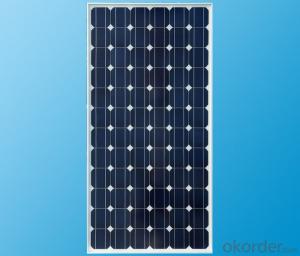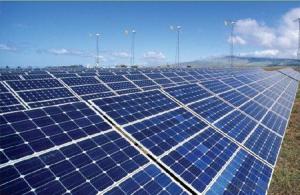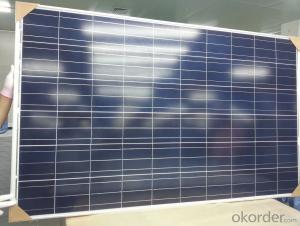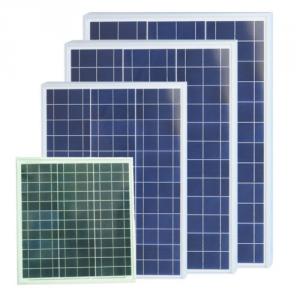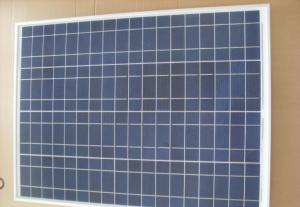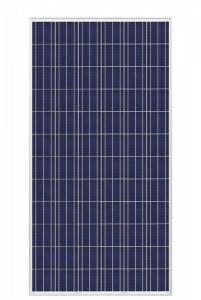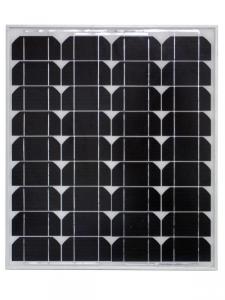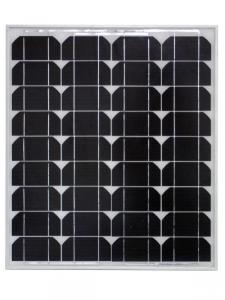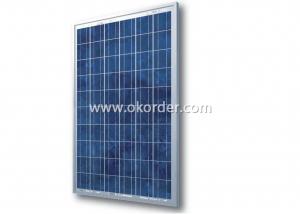Sunpower U Series 260/270/280/290/300w Poly Solar Panel for Solar Light
- Loading Port:
- Shanghai
- Payment Terms:
- TT OR LC
- Min Order Qty:
- 1000 watt
- Supply Capability:
- 1000000 watt/month
OKorder Service Pledge
OKorder Financial Service
You Might Also Like
Specification
Product Description
260/270/280/290/300w solar panel/pv panel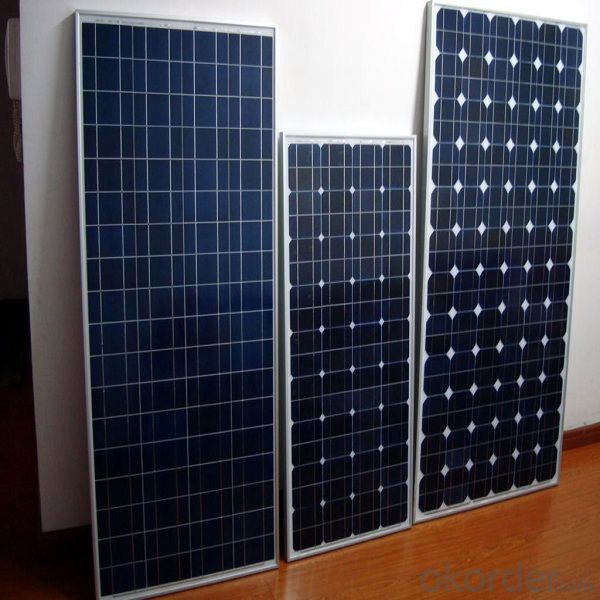
Features:
1)Long Service Life;
2)High Efficency Solar Cells;
3)Special Aluminum Frame Design;
4)High Transmission,Low Iron Tempered Glass;
5)Advanced Cell Encapsulation.
Solar panel Characteristics
1)High reliability with guaranteed +/-3% output power tolerance.
2)The modules can withstand high wind-pressure,snow loads and extreme temperatures.
3)Bypass diodes to minimize power loss with shading.
4)High and stable conversion efficiency to ensure the highest quality.
Quality and Safety
1)25 Years limited warranty of 80% power output.
2)10 Years limited warranty of 90% output.
3)5 Years limited warranty of materials and workmanshop.
4)ISO9001:2008(Quality management system)certified factory.
5)Product quality warranty & product liability insurance to guarantee and user' benefits.
EN 6100-6-3:2007 EN 6100-3-1:2007(IEC 6100-4-2:2008 IEC 61000-4-3:2008)
Application
1)On Grid System,Off Grid System,Hybrid Sytem.
2)Solar lighting ,lamps,household electricity,highway transportation.
3)Construction and photovoltaic power planta and so on.
The electrical Characteristics of 260,270,280,290,300 watts solar panel
| Maximum Power at ST(Pmax)W | 260Wp | 270Wp | 280Wp | 290Wp | 300Wp |
| Maximum Power Voltage(Vmp)V | 36/18 | 36/18 | 36/18 | 36/18 | 36/18 |
| Maximum Power Current(Imp)A | 7.2/14.4 | 7.5/15 | 7.77/15.55 | 8.05/16.11 | 8.33/16.66 |
| Open Circuit Voltage(Voc)V | 39.15/19.1 | 39.2/19.3 | 39.3/19.4 | 39.3/19.4 | 39.6/19.8 |
| Short Circuit Current(Isc)A | 7.8/15.6 | 8.03/16.05 | 8.13/16.26 | 8.86/17.72 | 9.16/18.33 |
| Cell Efficiency(%) | 15.57% | 16.5% | 16.7% | 16.7% | 18.1% |
| Module Efficiency(%) | 14.8% | 15.4% | 15.9% | 16.5% | 17.2% |
| Operating Temperature º C | -40º Cto+85º C | ||||
| Maximum system voltage | 1000V(IEC)DC | ||||
| Power tolerance | +/-3% | ||||
| Temperature coefficients of Pmax | -0.45%/º C | ||||
| Temperature coefficiency of Voc | -0.27%/º C | ||||
| Temperature coefficiency of Isc | 0.05%/º C | ||||
| Weight(kg) | 25.5 | ||||
| Number of cell(pcs) | 6*12 | ||||
| Dimensions(mm) | 1920*1000*40 | ||||
Why choose our solar panel is you ideal choose?
1. The important raw material, Solar cells, come from domestic public company and Taiwan famous company. Quality assurance: 25 years long life span, Industry leading power output warranty 10 years 100%, 20 years 95%, 25 years 85%.
There are some company which select inferior solar cells that are processed from recycled silicon material from small workshop, so their solar panel service life maybe less than 5 years because inferior solar cell power reduce much more every year.
2. Our company has automated production line for solar panel. Good technology, good quality assurance. Strong production ability: 300 pieces 300w solar panels can be manufactured per day. Most of company weld solar cell with artificial manual work. Bad manufacturing technique is difficult to keep consistency of products.
- Q: How do solar panels affect the aesthetics of a building?
- Solar panels can have both positive and negative effects on the aesthetics of a building. On one hand, they can enhance the visual appeal by adding a futuristic and environmentally friendly look. The sleek design of modern solar panels can be seen as an architectural statement, especially when integrated seamlessly into the building's design. On the other hand, some people may find the appearance of solar panels unattractive or incongruent with the building's overall design. However, advancements in solar technology are continually improving the aesthetics of panels, making them more appealing to a wider range of individuals. Ultimately, the impact on the aesthetics of a building depends on personal preferences and the specific design and placement of the solar panels.
- Q: I jotted down some notes for my Technology and Architecture class and I'm trying to figure out what i meant when i said 'Treated with gases at extremely high temperatures.' I have NO idea what I was talking about :) Im trying to figure out if what I am talking about is about Silicon, Polychristaline, or a Solar Cell/Panel.
- Let’s start off and discuss the three main types of photovoltaic (PV) panels: Monocrystalline Solar Panels - Monocrystalline cells are cut from a block of silicon that has been grown from a single crystal.These tend to be the most efficient, but also the most expensive solar panels. They have been considered the go-to panels for the last couple decades, and also boast being the oldest and most dependable. Polycrystalline Solar Panels - Polycrystalline cells are cut from multifaceted silicon crystal. They don’t come from a single piece of silicon crystal, but rather from many different crystals. These solar panels tend to be less efficient than monocrystalline solar panels of the same size. This means a 200 Watt Monocrystalline panel will usually be smaller than a 200 Watt Polycrystalline panel. Thin Film or Amorphous Solar Panels - These panels are not made up of any crystals. They are actually a thin layer of silicon deposited on a substrate or base material like metal or glass. Thin film solar panels tend to be the least efficient per square foot, but they are also the cheapest. The best application for amorphous panels is if you have a large amount of surface area and space doesn’t matter.
- Q: What i would like to know is if you were using commercially available solar panels, clustered as close together as possible and spread out on one acre, how much electrical energy is produced? if u can 'translate' this into terms of ( hour of average daylight = powering a ____ for X units of time)
- In okorder /
- Q: what direction should solar panels face to get the best exposure of the sun.
- Not compass south, but solar south. It's easy to find. Google Find Solar south and you can get directions. Even better are trackers, that will let your panels track the sun all day.
- Q: Can solar panels be used in areas with high levels of electromagnetic radiation?
- Yes, solar panels can be used in areas with high levels of electromagnetic radiation. However, it is important to ensure that the panels are properly shielded and grounded to minimize any potential interference or damage caused by the electromagnetic radiation.
- Q: i am starting to consider getting solar panels instead of paying electric bills which are somewhat higher now than they used to be
- Yes its true! electric bills are getting higher and higher. That's why a lot of people or businesses turn to alternative sources of energy. It is a little cheaper but can still provide the same level of energy. It is even good for the environment. If you are considering a switch for your energy provider, learn first about the different alternative sources of energy at businessswitchonline .uk. It might be helpful in making up your decision. Also, solar panels will depend on how large your house is or if it is really qualified for solar energy. You need an energy provider to have an evaluation of your house before you set up a solar panel.
- Q: Are solar panels suitable for commercial use?
- Yes, solar panels are highly suitable for commercial use. They offer numerous benefits such as reducing energy costs, providing a stable and reliable source of electricity, and promoting sustainable practices. Additionally, many governments and organizations offer incentives and tax benefits for businesses that implement solar energy systems. Overall, solar panels are a practical and cost-effective solution for commercial establishments aiming to reduce their environmental footprint and save on energy expenses.
- Q: How much energy can a solar panel generate?
- The amount of energy a solar panel can generate depends on several factors, including the size and efficiency of the panel, the amount of sunlight it receives, and the geographical location. On average, a standard residential solar panel can generate between 250 to 400 watts of power per hour, or around 2 to 4 kilowatt-hours per day. However, larger commercial or utility-scale solar panels can generate much higher amounts of energy, ranging from several kilowatts to several megawatts.
- Q: Can solar panels be used for camping or outdoor activities?
- Yes, solar panels can be used for camping or outdoor activities. Portable solar panels are designed specifically for such purposes and provide a convenient and eco-friendly way to generate electricity in remote locations. They can charge batteries or power devices directly, allowing campers to have access to electricity even when they are away from traditional power sources.
- Q: Ok so my electric bill is through the roof because of the air conditioner (mini-split). Is there any kinds solar panel I can buy at a store and install it myself? Do I need any skills? Which brand? blah...blah...blah...
- Unless you live in an area with a very high UV index, like Las Vegas for example, solar panels are not cost-effective. You definatly should not attempt to install solar power yourself if you intend to power a residence with it (unless you live in a shack). A certified electrician is required in order to connect your equipment to your house's electrical system. It isnt just as simple as a few panels. You need a converter that turns the DC voltage generated into AC. You also need equipment to connect to the metering system for your house. If you want to see if it is cost effective, you will need your electric bills that show usage for a year and the price per kWH. There are a lot of websites that have calculators for solar power systems.
Send your message to us
Sunpower U Series 260/270/280/290/300w Poly Solar Panel for Solar Light
- Loading Port:
- Shanghai
- Payment Terms:
- TT OR LC
- Min Order Qty:
- 1000 watt
- Supply Capability:
- 1000000 watt/month
OKorder Service Pledge
OKorder Financial Service
Similar products
Hot products
Hot Searches
Related keywords
